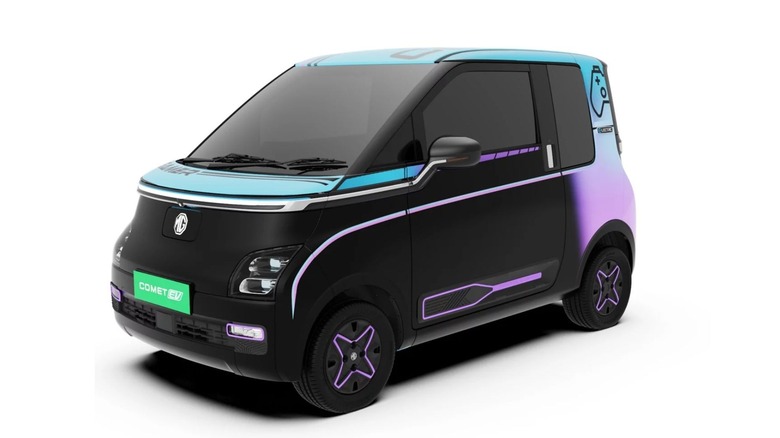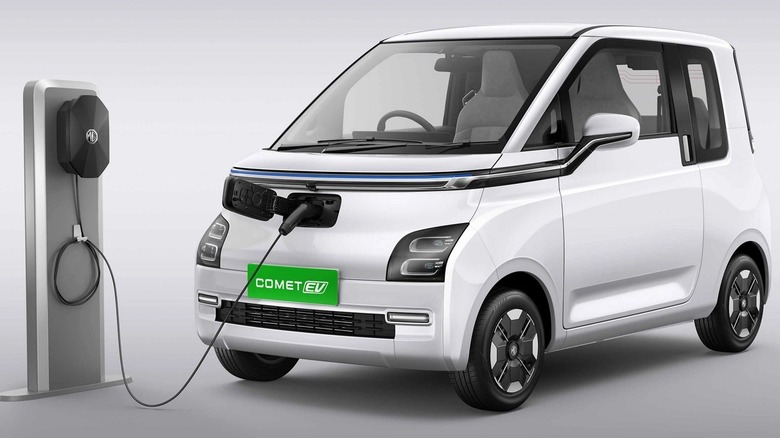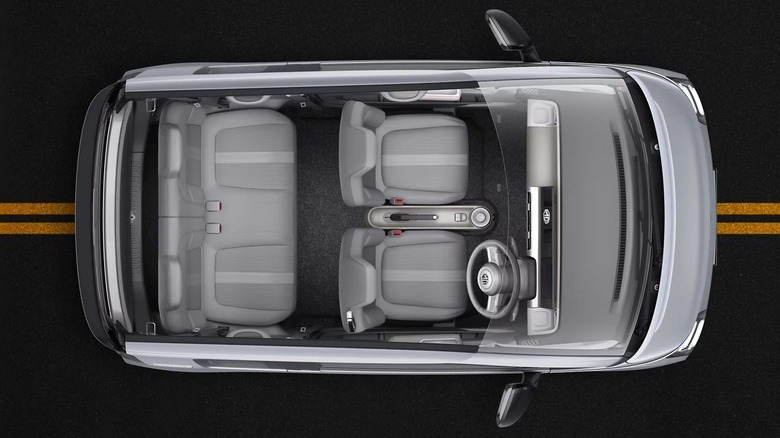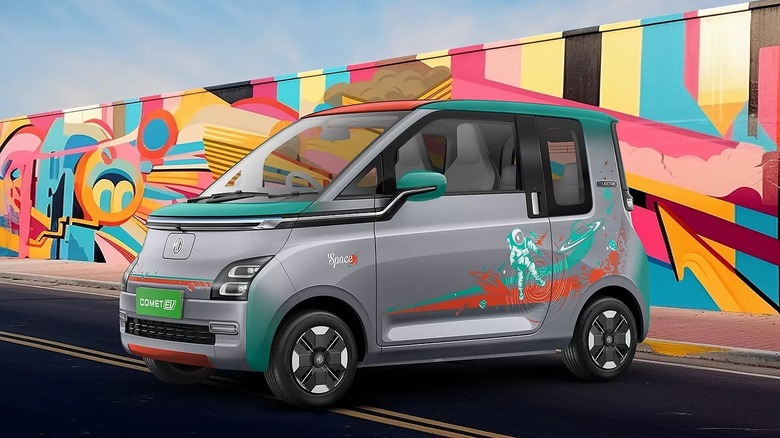What You Need To Know About India's Ridiculously Cheap MG Comet Electric Car
There is so much action happening in the electric vehicle space within the U.S. that you could be forgiven for not really understanding EV trends in other parts of the globe. Take for example India, where most of the EV action seems to be concentrated on the electric scooter space. And while there are a handful of EV cars on sale in the country, their sales account for a little more than 2% of India's massive passenger car market — the world's 5th largest.
The Indian passenger EV space is also peculiar in that it's almost entirely dominated by homegrown brands like Tata and Mahindra, while the rest are mostly established foreign brands like Hyundai and Toyota. The most popular EV car sold in India, as of November 2023, is the Tata Nexon EV, a compact crossover.
It is also worthwhile to note that most of the globally well-known players in the EV segment — including the likes of Tesla, Polestar, and Rivian — have little to no presence in India, although Tesla is reportedly considering making a $2 billion investment to set up its first production facility in the country.
All of these circumstances make India one of the most unique EV markets on the planet. It is in this complex competitive space that Chinese carmaker MG Motors (Morris Garages) brought its quirky little EV called the MG Comet to India. A rebadged version of the Wuling Air EV sold in Indonesia and China, this unique offering, with a distinctive design and competitive pricing, has not only shaken up the Indian EV space but also makes us wonder why such cars are not in the offing for consumers in the U.S.
Quirky or Cute?
The MG Comet straddles the thin line between quirky and cute. Depending on which side of the design divide you stand, it could be either. What is sure, however, is the fact that this car is not for everyone. With a total length of 9.7 feet, the entire car is shorter than the wheelbase of an average full-size sedan sold in the U.S. To make up for the lack of length, MG has adopted a tall-boy design for the Comet, and it stands reasonably tall for a car of its size (5.6 feet). It is this height that makes the car surprisingly spacious on the inside.
Given its compact dimensions, you'd expect the MG Comet to be a two-seater. However, surprising as it may sound, this vehicle can comfortably accommodate four reasonably-sized adults. The lack of overall length does, however, impede on the vehicle's ingress and egress procedure, given that it only has two doors. Also, with all four seats occupied, there is little to no space left for any luggage.
The Comet has several party tricks up its sleeve and is quite the attention-grabber. These tricks begin with the all-LED lighting paraphernalia, which includes LED headlamps, and attention-grabbing LED pilot lights that run horizontally across the front and rear. MG offers the Comet in four color options in India: Aurora Silver, Candy White, Starry Black, and Apple Green. For customers interested in additional customization options, MG also offers a different set of optional decals that owners can add to the car to make their vehicle truly stand out.
What's the powertrain like?
While it is plainly obvious that the MG Comet is not designed to set new performance benchmarks, the car will come across as grossly underpowered to the average American consumer. In India, MG offers the car with a tiny 17.3 kWh battery pack that generates a little over 110 Nm of torque and 42 bhp of power. In an Indian context, the Comet makes for an excellent compact car that is reasonably fast and can get you from point A to B in a relatively short time at a reasonable cost.
The vehicle can achieve top speeds of a little over 100 km/hr (60 mph) and is reasonably quick to get there, too, taking around 10 seconds for the zero to 60 dash. Of course, MG wants you to put the car in "Sports Mode" for you to achieve that number. Its small size translates to excellent maneuverability, particularly in crowded and narrow, Indian city streets. The tight turning radius of just 4.2 meters allows for effortless U-turns and navigating tight corners, making it a breeze to navigate busy urban environments.
While the Comet might not be a speed demon, it prioritizes efficiency, delivering an impressive range of up to 230 km (142 miles) on a single charge. Real-world range, however, is close to 160 to 170 km. This range is more than sufficient for most daily commutes and errands in the city, making it a practical and cost-effective transportation option. Given that the charging infrastructure in India is not as extensive as it is in the U.S., most buyers using the MG Comet will primarily charge it using a home charger.
Yours for less than $10,000
While its performance figures may not excite, the MG Comet does make a strong case for itself as a no-nonsense, affordable, compact city car that simply gets the job done. It is also ridiculously affordable, with the base "Pace" variant of the car starting at Rs 7,98,000 ($9,500 USD), going up to Rs 998,000 ($12,000) for the fully-loaded "Plush" variant. What makes things even more interesting is the fact that the immediate competition for the MG Comet comes in the form of the Tata Nexon EV — which is a normal-sized compact crossover — which costs only slightly more than the Comet. This car is a lot more practical than the Comet, is a proper family car, offers more range and performance, and seems like an overall better buy.
And while the Tata Nexon EV has turned out to be very popular, the MG Comet seems to have done the unthinkable and managed to carve a niche of its own. Its quirky looks, unique feature set, and overall positioning seem to have gone well with the average Indian consumer. Since its launch earlier this year, the MG Comet EV has been selling in fairly steady numbers for MG.
The success of the MG Comet demonstrates that affordability and practicality are not the only factors influencing consumer decisions in the Indian EV market. The car's individuality and distinctive character can also attract buyers.



